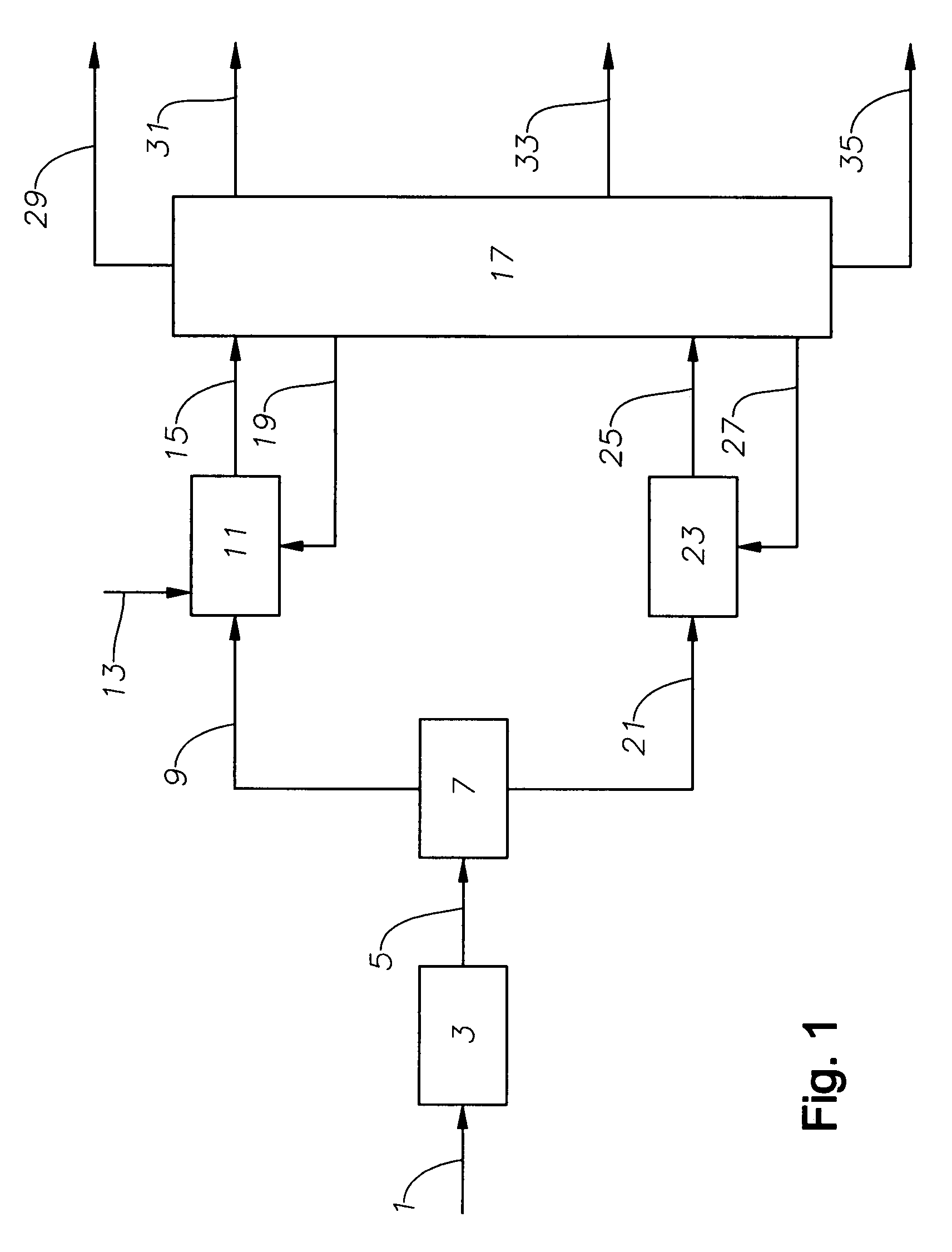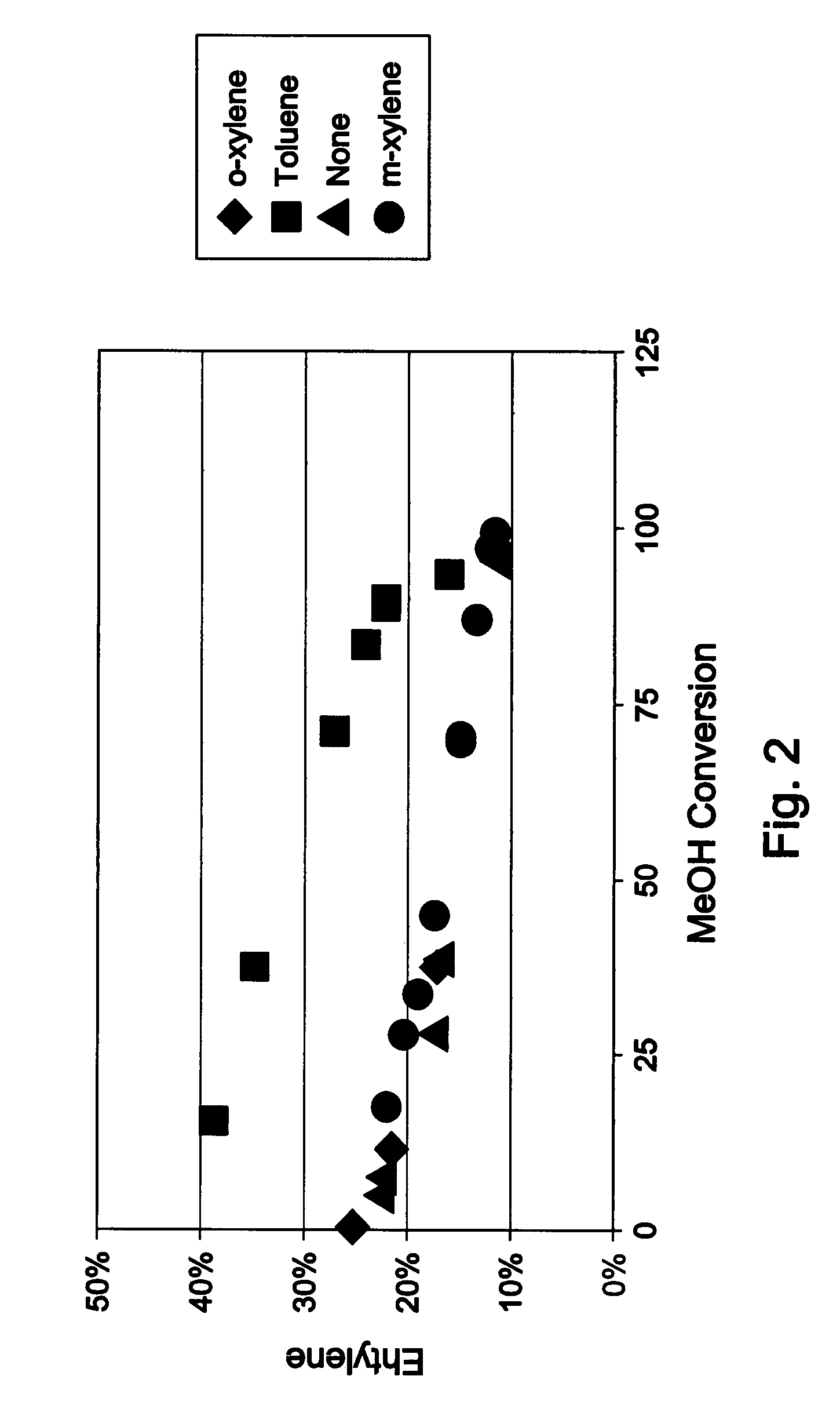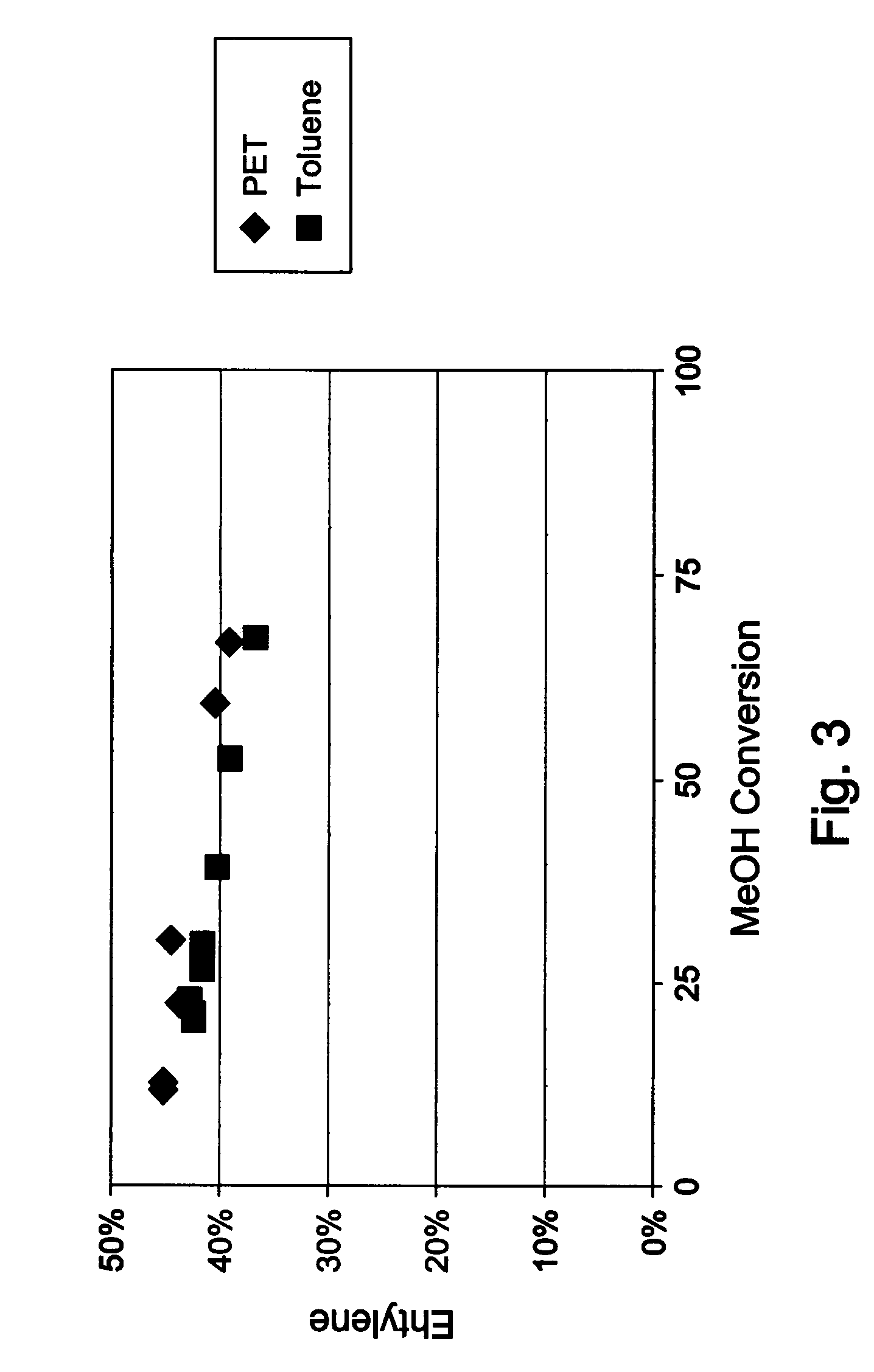Process of manufacturing para-xylene
a manufacturing process and para-xylene technology, applied in the field of making para-xylene, can solve the problems of no prior art disclosing the production of para-xylene from resid, no prior art teaching the use of methylation technology, and ethylbenzene is known as a bad feedstock for para-xylene production
- Summary
- Abstract
- Description
- Claims
- Application Information
AI Technical Summary
Benefits of technology
Problems solved by technology
Method used
Image
Examples
example 1
[0219]A spreadsheet simulation was performed using material balance. The simulation integrated a typical resid-fining process with a methylation process and a transalkylation process. The results of the simulation are demonstrated in FIG. 1 as one embodiment of an integrated system comprising hydroprocessing, steam cracking, and methylation processes using resid as a feedstock. A resid feedstock was supplied via line 1 to a hydroprocessing / steam cracking unit 3. The hydroprocessing severity and / or the steam cracking severity were adjusted to produce 22 weight units of pygas per 100 unit of the resid feedstock. The pygas produced preferentially contains >95 wt % C9− hydrocarbons. About 16 weight units of the total 22 weight units of the pygas are C8− feedstock, mainly C8− aromatics, and about 6 weight units of the total 22 weight units of the pygas are C9+ feedstock, mainly C0+ aromatics. Because the pygas was produced from a resid feedstock, the yield of the pygas from the steam cra...
example 2
[0221]A phosphorus stabilized ZSM-5 with an alpha value of 1 and 2,2 dimethylbutane Diffusion Parameter of 1 sec−1 (measured at a temperature of 120° C. and a 2,2-dimethylbutane pressure of 8 kPa-a) was used to convert an 80 wt % methanol, 20 wt % p-ethyltoluene feedstock. The reaction was run in a fixed-bed reactor at 0.7 hr−1 WHSV, 101.3 kPa-a pressure and a temperature of 390° C. The products of the reaction are listed in the following table.
[0222]
Wt % inNameProduct CompositionC1-C4 paraffins1Ethylene9.5Propylene7Butenes3C5+ non aromatics2.5toluene0.5p-xylene2.5Other aromatics1water29p-ethyltoluene15Dimethyl ether plus methanol29
[0223]In the example, methanol conversion to hydrocarbon products is 67 wt %. P-ethyltoluene conversion is 25 wt %. The example surprisingly shows that an ethyltoluene can be converted to p-xylene and ethylene with high selectivity. Those skilled in the art will recognize that when ethylbenzene is reacted with methanol over the same catalyst, the primary ...
example 3
[0224]A 65 wt % ZSM-5 (SiO2:Al2O3 molar ratio of 450:1) catalyst had been steamed at 510° C. for 1 hour. The steamed catalyst has an alpha value of about 1, a 2,2 dimethylbutane Diffusion Parameter of about 0.5 sec−1 (measured at a temperature of 120° C. and a 2,2-dimethylbutane pressure of 8 kPa-a), and a n-hexane sorption of 65 mg / g, was used to convert methanol at 430° C. and 101.3 kPa-a. Ethylene selectivity as a function of methanol conversion is reported in FIG. 2.
PUM
| Property | Measurement | Unit |
|---|---|---|
| temperature | aaaaa | aaaaa |
| temperature | aaaaa | aaaaa |
| wt % | aaaaa | aaaaa |
Abstract
Description
Claims
Application Information
 Login to View More
Login to View More - R&D
- Intellectual Property
- Life Sciences
- Materials
- Tech Scout
- Unparalleled Data Quality
- Higher Quality Content
- 60% Fewer Hallucinations
Browse by: Latest US Patents, China's latest patents, Technical Efficacy Thesaurus, Application Domain, Technology Topic, Popular Technical Reports.
© 2025 PatSnap. All rights reserved.Legal|Privacy policy|Modern Slavery Act Transparency Statement|Sitemap|About US| Contact US: help@patsnap.com



